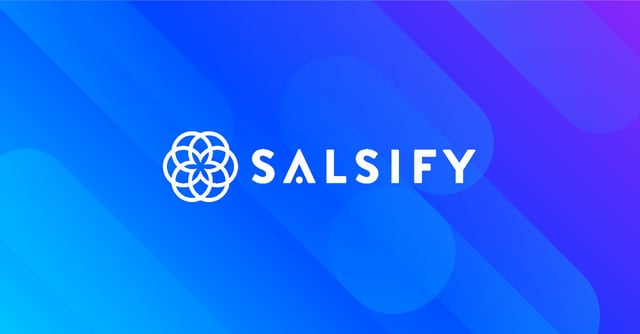

Salsify GDSN Data Pool
Learn how the Salsify GDSN Data Pool can help you centralize and connect with your trading partners — all within a unified PXM platform.
LEARN MOREPIM
Manage all product content in one central system of record.
Syndication
Easily syndicate product content to every consumer touch point.
Enhanced Content
Enrich product pages with below-the-fold content and rich media.
Intelligence Suite
Bring AI-powered capabilities directly into your Salsify workflows.
Grocery Accelerator
Leverage the first-ever category-wide PXM accelerator in the grocery industry.
GDSN Data Pool
Synchronize standard supply chain, marketing, and ecommerce attributes globally.
Digital Shelf Analytics
Continuously optimize your organization’s product content syndication.
Catalog Sites
Share secure, on-brand, and always up-to-date digital product catalogs.
Automation and AI
Automate business processes and enhance Salsify workflows with AI.
PXM Platform, Integrations, and APIs
Integrate the PXM platform with the rest of your enterprise systems architecture.
Supplier Onboarding
Accelerate supplier onboarding while ensuring your schema requirements are met.
Product Listing
Sell products faster with Product Listing.
Content Enrichment
Increase online conversions with Content Enrichment.
Automation
Save time and increase operational efficiency with retail automation.
SXM Platform, Integrations, and APIs
Integrate the SXM platform with the rest of your enterprise systems architecture.
Syndication Network
Automate how you exchange product content data to the digital shelf.
Enhanced Content Network
Turn product pages into product experiences with Enhanced Content.
Commerce Platform Integrations
Create winning product experiences everywhere shoppers are, including on owned sites.
GDSN Data Pool
Synchronize standard supply chain, marketing, and ecommerce attributes globally.
Open Catalog
Connect to the digital shelf faster with an open, standardized, and free product catalog.
Resources
Resource Library
Explore our ecommerce resources to get everything you need to win on the digital shelf.
Blog
Read our blog to get actionable insights for navigating changing markets and industry demands.
Webinars
Watch our on-demand ecommerce webinars to gain expert advice and tips from our community of industry leaders.
Customer Blog
Gain the latest tips, industry trends, and actionable ecommerce insights.
Knowledge Base
Investigate our knowledge base to build your Salsify skills and understanding.
API
Examine our comprehensive API and webhook guides to start working with Salsify quickly.

Download the report to get expert insights, consumer research, and top industry trends.
The Global Data Synchronization Network (GDSN) hasn’t lived up to its potential for the digital shelf. However, this isn’t a fault of the technology — it’s a fault of its implementation. The GDSN does work for the digital shelf, but it requires data pool providers to take advantage of changes in the retail environment.
Watch Salsify co-founder and chief marketing officer (CMO), Rob Gonzalez, explain how the GDSN does work for the digital shelf in our “At the Whiteboard” video series.
Video Source: Salsify YouTube
GDSN data pools must possess the following three factors for digital shelf relevancy.
The current data pool landscape is missing complete connections between all GDSN providers. While these connections are crucial for brand manufacturers to ensure seamless information exchange, some data pool providers don’t offer a network path for every endpoint.
Every data pool should support the full catalog of GS1 Global Data Dictionary (GDD) attributes. However, this isn’t a GDSN data pool requirement — even though there are thousands of GDD attributes, covering almost everything related to the consumer experience, including video, retailer-specific content, and more. This inadequate support leads to category-specific data pools and missing connections.
Retailer product categories change frequently, but data pools don’t have full visibility into all endpoint requirements. This lack of transparency results in rejected vendor submissions and an extensive trial-and-error process. GDSN data pools should know the complete requirements of endpoints to keep all source systems up to date.
Creating a world where the GDSN works for the digital shelf requires these three philosophical goals.
These convictions are why the Salsify GDSN data pool supports all three, allowing both the offline and online worlds to work together to create the future of commerce.

Learn how the Salsify GDSN Data Pool can help you centralize and connect with your trading partners — all within a unified PXM platform.
LEARN MORESalsify helps thousands of brand manufacturers, distributors, and retailers in over 140 countries collaborate to win on the digital shelf.
Standing out on the digital shelf starts with access to the latest industry content. Subscribe to Below the Fold, our monthly content newsletter, and join other commerce leaders.